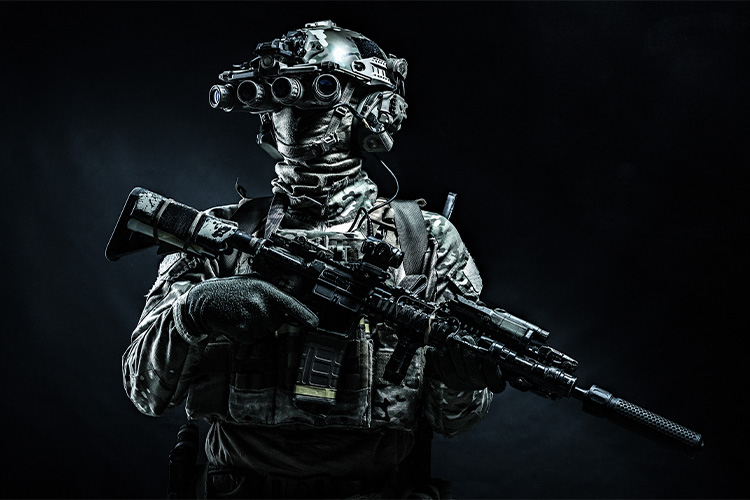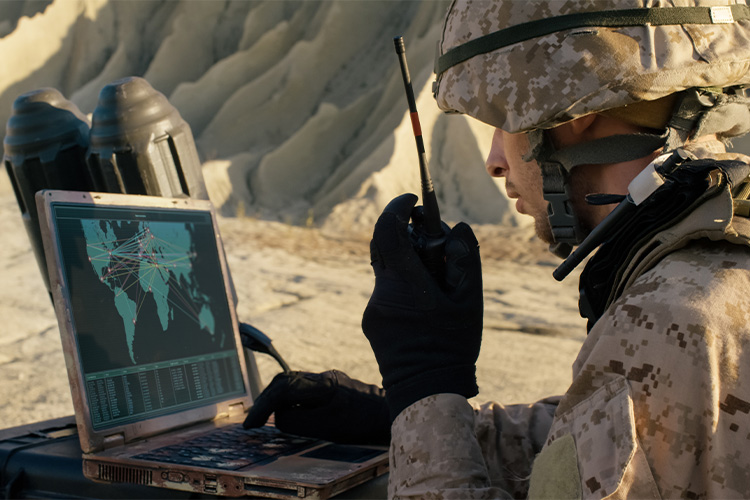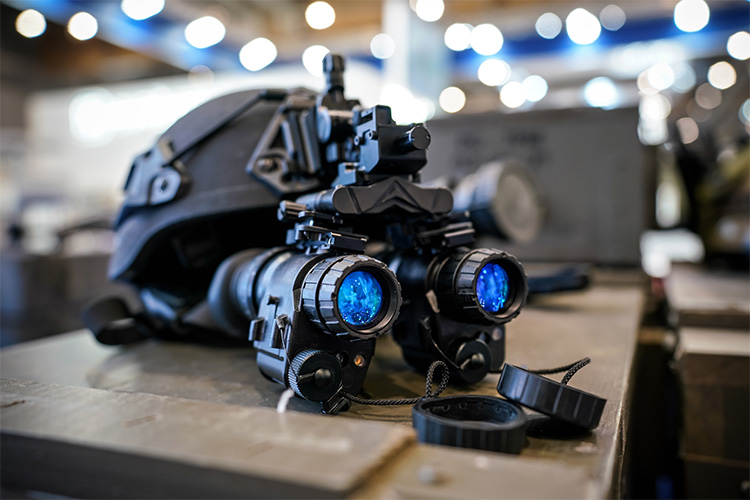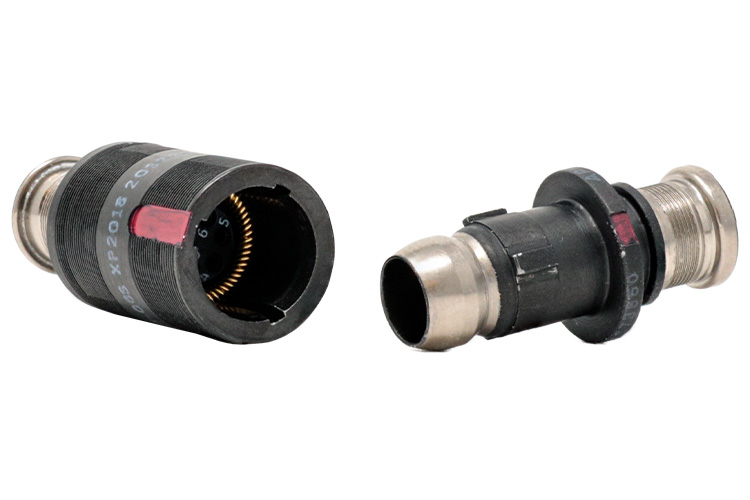
Modern soldier-worn gear has significantly enhanced the abilities of today’s warfighters, enabling them to be more effective, connected, and versatile on the battlefield. With advanced technologies integrated into their gear, soldiers can now benefit from real-time communication, situational awareness, and improved lethality.
It wasn’t always like this. Soldier-worn gear and equipment have undergone significant developments and improvements over time, driven by advancements in technology, materials, and a better understanding of soldiers' needs on the battlefield.
From Humble Roots
The Second World War gave rise to the modern, mobile infantry soldier we see today. Throughout the conflict, a combatant’s equipment typically consisted of a simple and basic assortment of kit.
Outside of a uniform, helmet, and weapon, the typical World War II infantry soldier usually carried a backpack or rucksack for supplies like field rations and first aid kits, as well as load-bearing equipment such as belts, harnesses, or webbing gear to carry ammunition, canteens, and other essentials. Specialized soldiers might have carried electronic equipment such as field radios and portable signal lamps, but this equipment was usually heavy and burdensome.
Today, lighter and more sophisticated soldier-worn devices provide soldiers with enhanced situational awareness, communication, and data-sharing capabilities.
Some of the soldier-worn capabilities that have become available for the warfighter include lightweight ruggedized communication and navigation systems that enable seamless coordination with teammates, as well as advanced night vision goggles and optics that provide enhanced visibility during low-light conditions. Soldier-worn sensors and wearable technologies are also under development to enhance situational awareness and provide critical data on soldier health, fatigue levels, and environmental conditions.
The individual soldier has become more lethal and capable than ever, and the level of interconnectedness and access to information provided by soldier-worn technology has enabled militaries to project force more effectively than ever before.
Communication and Navigation Systems

Soldier-worn communication systems have undergone a significant transformation from their roots as bulky, heavy field radios and other equipment. These systems have experienced a significant reduction in size and weight over the last several decades thanks to advancements in miniaturized components and materials engineering, and are much lighter, streamlined, and more capable than ever before.
Modern military communication systems carried by soldiers now feature a variety of handheld devices such as tactical radios and ruggedized tablets and computers. Due to GPS devices that accurately determine precise locations, soldiers aren’t strictly limited to maps and compasses for navigation. All these devices fit snuggly into pouches on a soldier’s uniform ready to be deployed with ease and are typically charged and powered through a compact power-management system that can support multiple devices.
The U.S. Army’s NETT Warrior program is putting this technology into practice.
NETT Warrior (Network-Enabled Tactical Technology) is a soldier-worn system that leverages smart devices, specialized military software, and applications to enhance a military unit’s situational awareness, command and control, and overall effectiveness. The system is designed to provide soldiers, particularly the dismounted squad leader, with real-time access to critical information, tactical maps, and intelligence data that enables a level of information-sharing between soldiers at speeds and efficiencies that were never possible before.
Night Vision and Advanced Optics

Armies throughout history didn’t like to fight at night and tried to avoid it when they could. That changed once soldiers acquired the ability to see in the dark.
Night vision is one of the most impactful developments of modern soldier-worn gear. Night vision devices utilizing image intensifiers were created in World War II and early versions were quite rudimentary and impractical, but today's soldiers have access to advanced night vision goggles and thermal imaging devices that provide a significant tactical advantage in low-light conditions.
Gen 3 night vision devices represented a substantial leap forward when they were developed in the late 1980s. These devices utilized gallium arsenide photocathodes, resulting in higher sensitivity, improved resolution, and extended operational range. Gen-4 devices improved the technology further with autogated technology to mitigate the effects of bright light exposure and improve performance in dynamic lighting conditions.
The latest night vision devices take the technology even further, such as night vision and thermal imaging integration through the Enhanced Night Vision Goggle-Binocular developed by L3Harris. Augmented reality and heads-up displays through devices such as the Integrated Visual Augmentation System (IVAS) under development by Microsoft for the U.S. Army are aiming to revolutionize how soldiers navigate their environments and carry out their missions.
Wearable Sensors

There has been a significant trend in recent years toward equipping modern soldiers with wearable sensors to enhance their capabilities, situational awareness, and overall performance in the field. These sensors leverage advanced technologies and data analytics to provide crucial information to soldiers and military commanders. They come in various forms and serve different purposes, contributing to the development of what is often referred to as "smart" or "connected" soldiers.
Nowadays, soldier-worn sensor technology comes in a variety of forms, including:
- Biometric Sensors: Biometric sensors are designed to monitor the physical and physiological state of the soldier. By continuously monitoring vital signs and other data, commanders can assess a soldier's health, stress levels, and fatigue, allowing them to make informed decisions about their deployment and well-being on the battlefield.
- Position and Location Sensors: Position and location sensors, such as GPS (Global Positioning System) and IMU (Inertial Measurement Unit), help track soldiers' movements and locations in real-time. This data is useful for coordinating troop movements, ensuring safe navigation, and providing situational awareness to both soldiers and their commanders.
- Environmental Sensors: These sensors are used to monitor surrounding conditions on the battlefield, including temperature, humidity, radiation levels, and chemical agents. By analyzing this data, soldiers can take appropriate measures to protect themselves from environmental threats and adjust their tactics accordingly.
- Communication Sensors: Communication sensors facilitate seamless communication among soldiers and with command centers. These include voice communication systems, data transmission devices, and inter-soldier networking technologies. Improved communication enhances coordination, reduces response times, and enables better decision-making in the field.
Modern soldier-worn gear delivers more capability to the soldier than they’ve ever had before. But because of this, power and speed requirements for this equipment are growing rapidly. Soldier-worn gear requires interconnect systems that can not only facilitate the power and speeds to operate the modern soldier’s suite of equipment but also be mindful of space and weight as the soldier may carry loads upwards of 120 pounds on missions.
Micro-Miniature Connectors Designed for the Modern Soldier

Amphenol's Warrior Grip series is the only Nett Warrior-style connector to bring fast charging 10-amp capability directly to the warfighter and is part of Amphenol’s 2M family of micro-miniature connectors.
Amphenol 2M miniature and micro-miniature connectors are the ideal interconnect solution for the modern warfighter.
These downsized connectors provide the consistent performance and dependability of Amphenol's D38999 series in a more compact and lighter design. Amphenol 2M Connectors deliver the superior connectivity that’s essential to meet the high-performance demands of soldier-worn gear without weighing the soldier down.
The 2M family features a complete portfolio of miniature and micro-miniature connectors, including:
- Warrior Grip: A soldier-worn push-pull connector designed to exceed the rigorous requirements of the US Army’s Nett Warrior program.
- 2M805 Tri-Start Threaded Coupling: A Tri-Start threaded, ruggedized miniature connector that meets D38999 requirements at half the size and weight.
- 2M804 Push-Pull Quick-Disconnect: A ruggedized, push-pull miniature connector with multiple options for soldier-worn applications.
- 2M803 ¼ Turn Bayonet Coupling: A general-purpose, bayonet-coupling miniature connector for light-duty applications that require frequent disconnect.
- MRC (Multi-Media Ruggedized Connectors): A micro-miniature solution ideal for communications systems running Gigabit Ethernet, USB 2.0/USB 3.0, HDMI, and 10 Gigabit Ethernet when specified and designated to a specific configuration.
Visit Amphenol Aerospace's 2M Micro-Miniature section for more information.